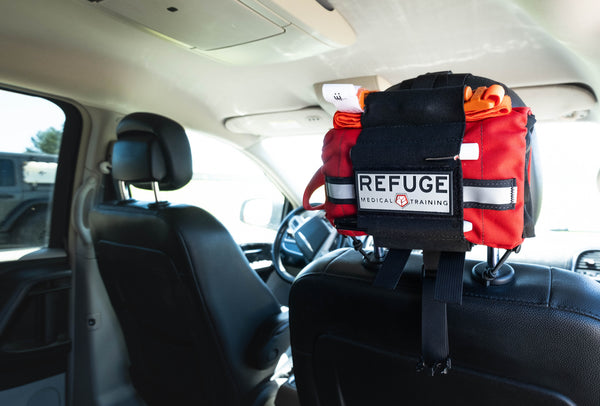
Car IFAK Essentials: From Basic to Customizations
On the road, being prepared is not just about having the right mindset—it’s about equipping yourself with the right tools for any situation. A car IFAK, which stands for individual first aid kit, is more than just a basic utility; it’s a vital personal safety net.
When selecting and stocking a car IFAK, think of it as the foundation upon which you can build a customized kit with personal modifications. The goal is to ensure that your car’s emergency resources are as robust as the rest of your supplies. Read on to explore some car IFAK essentials, from basic to customizations.
What a Basic Car IFAK Should Contain
Whether you buy a prepacked kit or build one yourself, there are some essential items that should be in every basic IFAK that goes in the vehicle. Make a list, and make sure it includes these items.
Hemostatic Gauze
Hemostatic gauze contains agents that accelerate the body’s natural blood clotting process, which is crucial for controlling bleeding. Vehicle collisions can result in severe cuts and abrasions, which cause profuse bleeding. Being prepared to contain bleeding while waiting for help to arrive is essential to surviving a car crash.
Tourniquet
Where bleeding is severe or pulsating indicates the blood is exiting a cut artery, stopping the bleeding becomes even more critical. Although many shows teach us to apply pressure to a wound to stop bleeding, pressure simply isn’t enough for some injuries. Even hemostatic gauze can’t staunch the flow of blood from severed veins or arteries. That’s why your IFAK should contain a tourniquet.
Tourniquets cut off blood circulation to above the severed vessel to prevent “bleeding out.” While cutting off blood circulation to a limb entirely could result in permanent damage to the appendage, losing a limb is preferable to losing a life.
Medical Gloves
Medical gloves protect both the caregiver and recipient from infection. Most vehicles are far from sterile environments, and medical emergencies that occur in cars can involve glass, metal, mud, fibers, and the remains of a recent lunch flying around. These substances can quickly get into wounds. Gloves can help minimize the risk of introducing these foreign substances.
Alcohol Wipes
Alcohol wipes can further protect against infection. Each small, pre-moistened towelette cleans an area that requires preparation for bandaging or stitching.
Pain Relievers
Pain relievers can help an injured person remain calm and endure the wait for medical professionals to arrive at the scene of an accident and transportation to a hospital. If you take or administer pain relievers, it’s critically important to inform emergency medical personnel about what medicines you gave the patient before they begin further treatment.
Survival Blanket
Survival blankets feature heat-reflective materials that can keep an injured person warm and protect them against the elements. Injured people may go into shock. One side effect is severe shivering. A survival blanket can help ease this symptom while helpers try to aid circulation by elevating the legs (if it is safe to do so). These blankets are car IFAK essentials, especially if you drive in high-altitude areas or other climates prone to cold weather.
Burn Dressings
Burn dressings provide immediate relief and begin the healing process for agonizingly painful burn injuries. By mitigating further damage and shielding against contamination, these dressings can improve a burn victim’s chance of survival and even minimize scarring for some types of burns.
How To Customize a Basic Car IFAK To Fit Your Lifestyle
For adventurers who frequently drive to wilderness areas, people who live in remote areas, and long-haul drivers who must travel in foul weather, a car IFAK may require additional items. Different injuries can occur when pursuing outdoor activities such as rock climbing, and longer delays in professional medical response may require a higher level of first aid. Customize your car IFAK with some of the following items to better face the dangers you might face.
Cervical Collar
A cervical collar is a piece of medical equipment placed around the neck. Its primary role is to offer support to the head and the neck. It restricts movement, provides stability, and minimizes the risk of damage to the spinal cord until the arrival of professional medical help.
Splints and Triangular Bandages
Splints and triangular bandages work together to immobilize and support injured limbs. Splints are particularly useful in stabilizing fractures or dislocated joints, preventing further injuries during transportation to a healthcare facility.
Triangular bandages can function as slings to offer support to broken arms, act as dressings to cover open wounds, or work as tourniquets to control bleeding.
Chest Seals
Chest seals are life-saving devices that are essential for managing penetrating chest injuries. These devices are typically adhesive patches that prevent air from entering the chest cavity through a wound. When someone has an open chest wound, applying a chest seal can prevent the development of a life-threatening condition called a tension pneumothorax. This condition occurs when air accumulates in the chest, exerting pressure on the lungs and heart. Using a chest seal allows the patient to maintain lung function until they can receive medical attention.
Sutures, Scissors, and Needle Holders
Sometimes, a wound needs stitching at the scene of an accident or injury. Sutures are threads used to close wounds or surgical incisions. They help control bleeding and promote healing by holding tissue together.
Scissors are useful for cutting dressings, bandages, or clothing to expose and treat wounds. Needle holders, as the name suggests, hold suturing needles during the stitching process. They provide precision and control, making the suturing process safer and more efficient.
Nasopharyngeal Airway
A nasopharyngeal airway, often referred to as an NPA, is a tube designed for insertion in the nasal passageway to keep an airway open. When a patient is unconscious or semi-conscious and their airway is compromised, the nasopharyngeal airway can help them breathe. It is a crucial component of a first aid kit that can be a lifesaver, providing an immediate solution to airway obstructions and enabling effective ventilation.
Where To Store Your Car IFAK
It is vital to ensure that your vehicle IFAK is within easy reach in the event of an emergency, such as a crash. One effective method is to use slings or hooks to hang the first aid kit from the back of a headrest. This position keeps the kit elevated and visible, allowing for quick access and reducing the risk of a collision’s impact throwing it around inside the vehicle.
Another practical storage option is to keep the first aid kit between the driver and passenger seats. This location often allows for immediate access, as either the driver or the passenger can reach it without needing to move significantly. It is important, however, to secure the kit and prevent it from becoming a projectile during a sudden stop or impact.
A well-supplied car IFAK becomes is a fundamental necessity for anyone who drives beyond the reach of immediate medical help. Before you hit the road, make sure you have a car IFAK somewhere within reach in case of an emergency.


